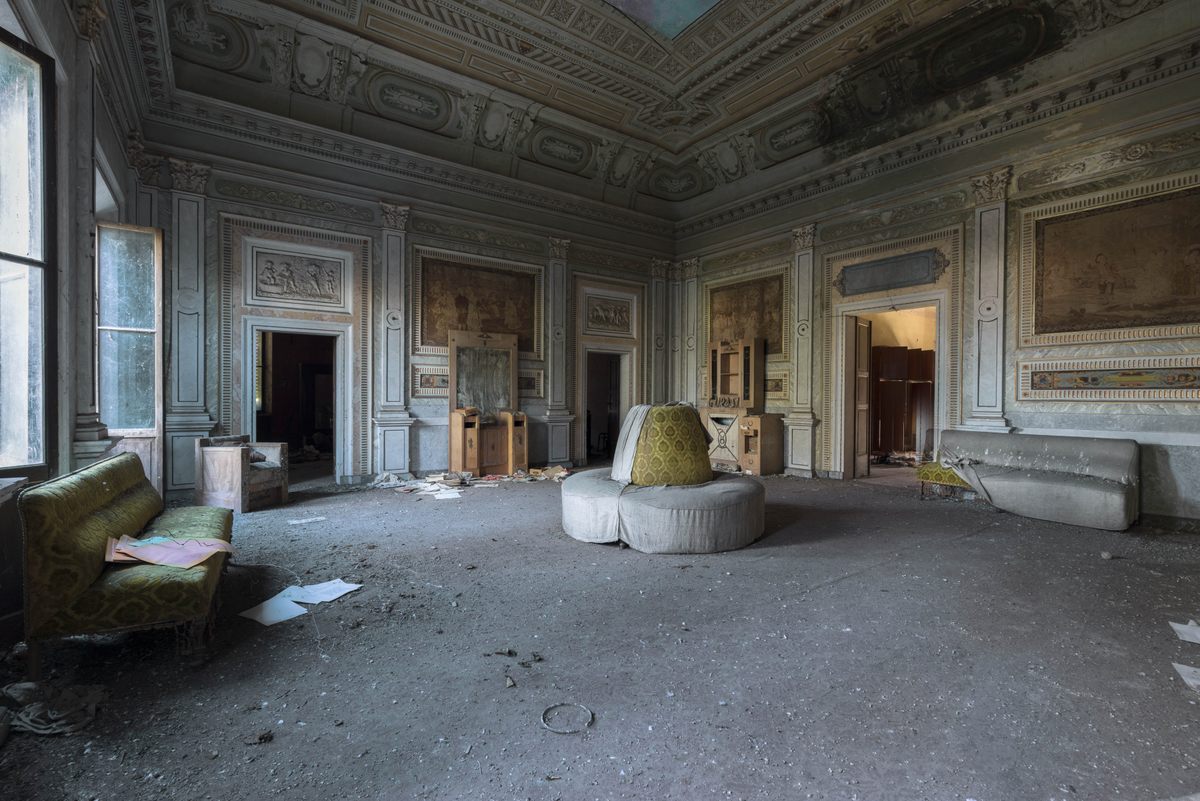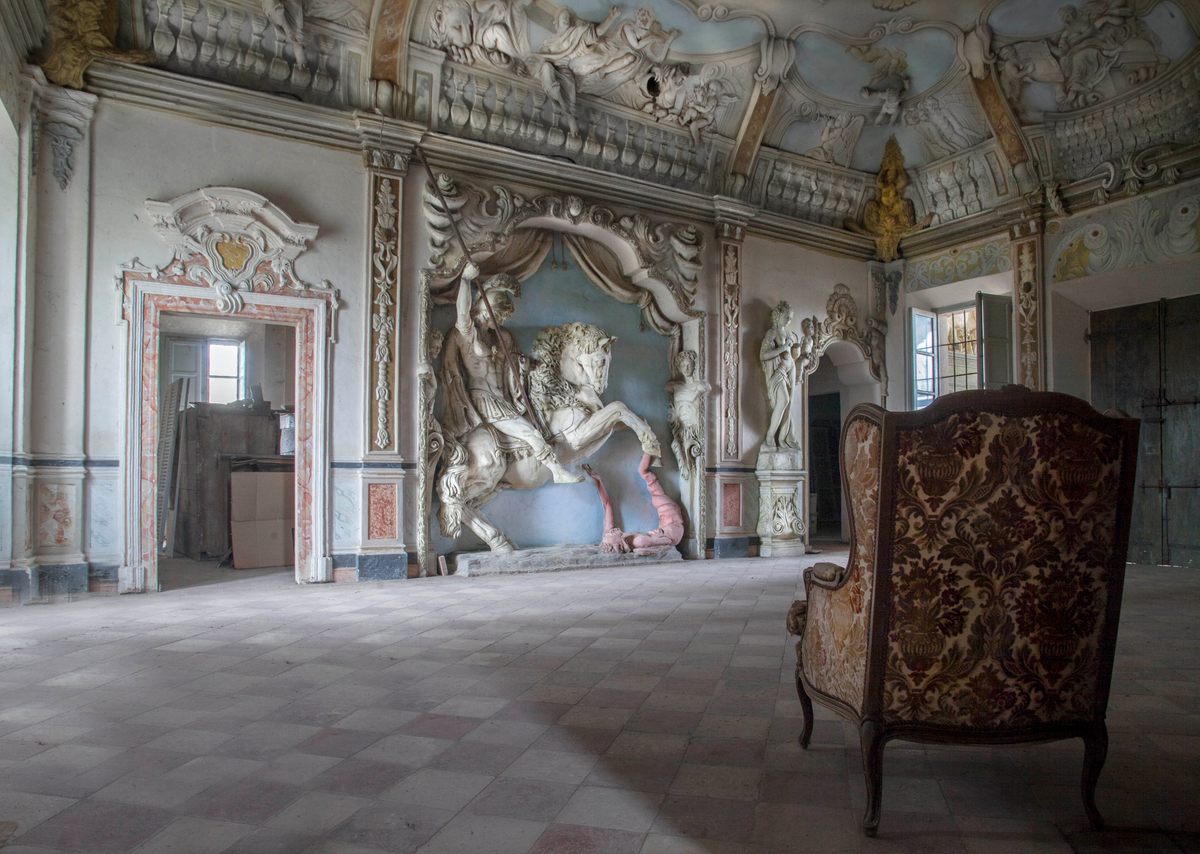A few years ago, while perusing a local newspaper, Florence-based Italian photographer Eleonora Costi stumbled upon a story concerning a deserted 14th-century villa situated a short distance north of Milan. She explains, “I decided to go and check it out because it sounded like a good location to take photos.” “A haunting silence and the strong smell of wet wood are the first things I remember.”
The Cirivelli and Arconati families eventually purchased the 10-acre estate, which was initially constructed by the Pusterla family. It was known as “Villa Napoleone” in the 19th century since Napoleon Bonaparte used it as his headquarters during the French Revolutionary Wars’ Italian phase.
The roughly 700-year-old estate wasn’t abandoned until after 1978, when a new law mandated the closure of mental hospitals. Since then, no attempts have been made to restore it.
According to Costi, “it was really quiet, damp, and dark.” “I’ve only been experiencing this strange quiet in deserted areas. As though someone would suddenly emerge from around a corner.

Costi has traveled to around 50 deserted villas in northern and central Italy after that initial visit. “You discover there is a vast world of abandoned places out there once you start researching.”
She’s developed a variety of techniques throughout the years to uncover these buried treasures. Often, it comes down to typing the appropriate combination of terms into Google. At other times, she looks through the local newspapers to see whether someone has mentioned a decaying villa or a local family that used to own one. Google Earth is also beneficial.”A roof that appears to have some crumbling areas, for instance, is typically a promising clue.”
She receives guidance from other photographers less frequently. However, as you might expect, adventurers drawn to deserted areas tend to be quite coy about where they find things.”Meeting people during a shoot is not unusual,” she explains. Photographers, authors, small-time criminals searching for marble blocks or copper wiring, and occasionally owners are among the people they frequently run into. I used to know an old woman who was the owner of one of the villas. I gave her house some compliments, and she said, “If you like it, it’s yours!”
Many Italians who inherit homes that date back hundreds of years may find that their fortune is more of a curse than a blessing. According to Costi, “people very often can’t keep up with high taxes and maintenance costs, let alone financing restoration works.”

The aim to raise awareness of Italy’s deserted villas in the hopes that someone would intervene to save them is a driving force behind some of Costi’s work.
“It’s evident that a lot of people find the opulence appealing, but what strikes me about these places is how beautiful they remain,” she says. “Seeing a 300-year-old fresco still standing in spite of the neglect is remarkable.”
It does eventually wear thin from decades of rain and the damage that occurs from earthquakes, which are frequent in central Italy. “You realize there is not much you can do when you visit a place and see water infiltrations in its foundations.” On the other hand, restoration efforts may have an impact in other situations.

She claims that the experience is similar to going back in time to a moment that has been frozen. “Even though I can’t begin to explore these long-lost private worlds, I can’t help but be nostalgic for a period of time that will never return.”